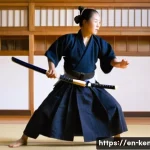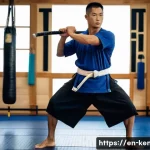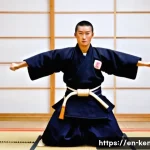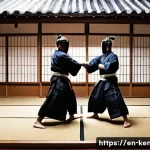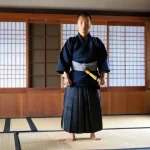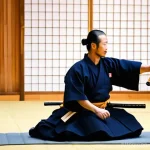Ever feel like you’re stuck in a rut, searching for that extra *something* to ignite your passion and personal growth? Well, believe it or not, the ancient martial art of Kendo might just be the surprising answer you’ve been seeking.
It’s more than just clashing bamboo swords; it’s a journey of discipline, focus, and self-discovery that translates beautifully into everyday life. I’ve personally found that the mental fortitude I’ve gained from Kendo has improved my focus in work and given me a new perspective on challenges.
Kendo, at its heart, is a relentless pursuit of self-improvement through rigorous training. It’s about mastering not only the physical techniques but also cultivating a strong mind and respectful spirit.
Looking ahead, experts predict a rise in popularity of mindfulness practices intertwined with physical activity, and Kendo perfectly embodies this trend.
It offers a unique blend of tradition and self-improvement, a recipe for attracting a wider audience looking for more than just a workout. Now, let’s dive into the details and explore how Kendo can unlock your potential.
Let’s delve deeper and find out exactly how it works!
Alright, let’s dive into how Kendo can unlock your potential!
Sharpening Your Focus: The Mental Edge Kendo Provides
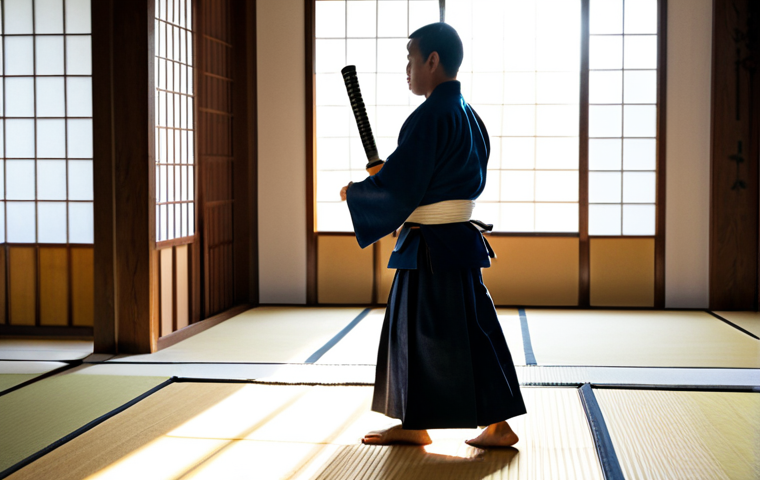
Kendo isn’t just about swinging a *shinai*; it’s a mental workout that hones your focus and concentration. The constant need to anticipate your opponent’s moves, react instantly, and maintain unwavering composure under pressure sharpens your mind in ways that translate beautifully into other areas of your life.
Think of it as a high-intensity interval training for your brain! I’ve personally found that after a tough Kendo session, my ability to concentrate on complex tasks at work is significantly improved.
It’s like hitting a mental reset button.
Cultivating Mindfulness Through Controlled Movements
In Kendo, every movement is deliberate and precise. This demands a heightened sense of awareness and presence in the moment, which is essentially mindfulness in action.
You can’t be thinking about your grocery list or that awkward email you have to send; you have to be 100% present in the *dojo*, focused on your opponent and your own movements.
This cultivated mindfulness bleeds into your daily life, helping you become more aware of your thoughts, feelings, and surroundings, leading to greater emotional regulation and reduced stress.
I recall one particularly stressful week at work where I was juggling multiple projects and deadlines. The principles of mindfulness I learned through Kendo helped me stay calm, focused, and ultimately, deliver everything on time.
Turning Pressure into Performance
Competition in Kendo can be intense. Stepping onto the *shiai-jo* (competition floor) with the weight of expectations and the pressure to perform can be daunting.
However, learning to manage this pressure and channel it into focused action is a valuable skill that transcends the *dojo*. It teaches you to stay calm under fire, make quick decisions, and trust your training.
It’s like learning to thrive in the face of adversity, a skill that’s invaluable in any career or personal endeavor. I remember one tournament where I was particularly nervous.
My *sensei* (teacher) reminded me to focus on my training, breathe, and trust my instincts. That advice helped me not only win the match but also develop a mental framework for dealing with pressure in all aspects of my life.
Building Unbreakable Discipline: The Kendo Lifestyle
Discipline is the bedrock of Kendo. From consistently attending training sessions to meticulously maintaining your *bogu* (armor), the practice instills a deep sense of discipline that permeates every aspect of your life.
It’s not just about following rules; it’s about internalizing a commitment to excellence and pushing yourself beyond your comfort zone.
The Power of Consistent Practice
Kendo demands consistent practice. You can’t just show up once a week and expect to improve. It requires dedication, perseverance, and a willingness to put in the hard work, even when you don’t feel like it.
This consistent effort builds a powerful sense of discipline that translates into other areas of your life, from sticking to a workout routine to achieving your career goals.
I’ve found that the discipline I’ve cultivated through Kendo has made me more organized, efficient, and accountable in all my endeavors.
Respect for Tradition and Etiquette
Kendo is steeped in tradition and etiquette. From bowing to your opponent and *sensei* to meticulously cleaning the *dojo*, every action is imbued with respect and mindfulness.
This emphasis on tradition instills a sense of humility and gratitude, fostering a deeper appreciation for the art and the people who practice it. It’s more than just physical training; it’s a cultural experience that shapes your character and values.
I’ve always been impressed by the level of respect and camaraderie within the Kendo community. It’s a supportive environment where everyone encourages each other to grow and improve.
Finding Your Tribe: The Kendo Community and Camaraderie
Kendo isn’t just an individual pursuit; it’s a community. The shared experience of training, competing, and overcoming challenges forges strong bonds between practitioners, creating a supportive and encouraging environment where everyone can thrive.
Shared Struggles, Shared Triumphs
The rigorous training in Kendo creates a unique bond between practitioners. You sweat together, struggle together, and ultimately, triumph together. This shared experience fosters a sense of camaraderie and mutual respect that’s hard to find elsewhere.
It’s like being part of a team, where everyone is working towards a common goal.
Mentorship and Guidance from Experienced Practitioners
*Sensei* play a vital role in Kendo, providing not only technical instruction but also mentorship and guidance. They share their knowledge, experience, and wisdom, helping you develop not only your Kendo skills but also your character.
Their guidance is invaluable, providing a roadmap for personal growth and self-improvement. I’ve been fortunate to have several amazing *sensei* who have not only taught me the art of Kendo but also instilled in me important life lessons.
Kendo: A Holistic Approach to Well-being
| Aspect | Benefits of Kendo |
|---|---|
| Physical Fitness | Improved cardiovascular health, strength, agility, and endurance. |
| Mental Acuity | Enhanced focus, concentration, mindfulness, and decision-making skills. |
| Emotional Regulation | Increased self-confidence, stress management, and emotional resilience. |
| Social Connection | Stronger sense of community, camaraderie, and belonging. |
| Character Development | Cultivation of discipline, respect, humility, and perseverance. |
Beyond the Dojo: Real-World Applications of Kendo Principles
The principles and skills you learn in Kendo aren’t confined to the *dojo*. They translate beautifully into other areas of your life, enhancing your performance in your career, relationships, and personal pursuits.
Enhanced Problem-Solving Skills
Kendo requires you to constantly analyze your opponent’s movements, anticipate their strategies, and adapt your own tactics accordingly. This constant problem-solving hones your analytical skills, making you a more effective problem-solver in all areas of your life.
It’s like training your brain to think strategically and creatively. I’ve found that the analytical skills I’ve developed through Kendo have helped me approach complex problems at work with greater clarity and efficiency.
Improved Communication and Collaboration
Effective communication is essential in Kendo, both with your *sensei* and your fellow practitioners. You need to be able to clearly articulate your ideas, listen attentively to feedback, and work collaboratively towards common goals.
These communication skills are invaluable in any team environment.
The Gear You Need to Get Started
Thinking of taking the plunge? Here’s a quick rundown of the essential gear:* Shinai: Your bamboo sword. Start with a standard size and weight.
* Bogu: The armor. This includes the *men* (helmet), *kote* (gloves), *do* (chest protector), and *tare* (waist protector). It’s a significant investment, so consider renting initially or purchasing used gear in good condition.
* Gi and Hakama: The traditional uniform. A lightweight, breathable material is ideal for comfort during training.
Finding a Kendo Club Near You
The best way to experience Kendo is to find a local club or *dojo*. Look for reputable organizations with experienced instructors and a welcoming atmosphere.
Many clubs offer introductory classes or trial periods, allowing you to experience Kendo firsthand before committing to long-term membership. Check out local community centers, martial arts schools, or online directories to find Kendo clubs in your area.
Don’t hesitate to visit a few different clubs and observe a class before making your decision.
The Unexpected Benefits of Embracing the Sword
Who knew swinging a bamboo sword could unlock so much potential? From sharpening your focus and building unbreakable discipline to finding your tribe and enhancing your overall well-being, Kendo offers a unique and rewarding journey of self-discovery.
So, if you’re looking for a way to challenge yourself, grow as a person, and connect with a supportive community, consider taking up Kendo. You might just surprise yourself with what you’re capable of achieving.
Alright, let’s dive into how Kendo can unlock your potential!
Sharpening Your Focus: The Mental Edge Kendo Provides
Kendo isn’t just about swinging a shinai; it’s a mental workout that hones your focus and concentration. The constant need to anticipate your opponent’s moves, react instantly, and maintain unwavering composure under pressure sharpens your mind in ways that translate beautifully into other areas of your life. Think of it as a high-intensity interval training for your brain! I’ve personally found that after a tough Kendo session, my ability to concentrate on complex tasks at work is significantly improved. It’s like hitting a mental reset button.
Cultivating Mindfulness Through Controlled Movements
In Kendo, every movement is deliberate and precise. This demands a heightened sense of awareness and presence in the moment, which is essentially mindfulness in action. You can’t be thinking about your grocery list or that awkward email you have to send; you have to be 100% present in the dojo, focused on your opponent and your own movements. This cultivated mindfulness bleeds into your daily life, helping you become more aware of your thoughts, feelings, and surroundings, leading to greater emotional regulation and reduced stress. I recall one particularly stressful week at work where I was juggling multiple projects and deadlines. The principles of mindfulness I learned through Kendo helped me stay calm, focused, and ultimately, deliver everything on time.
Turning Pressure into Performance
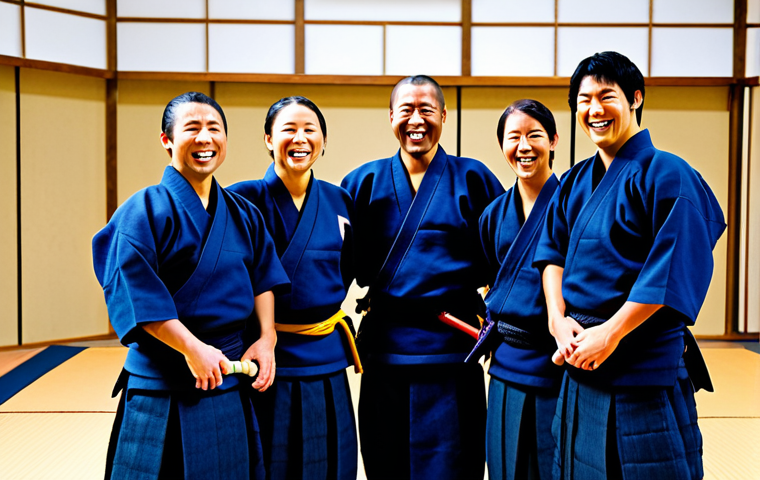
Competition in Kendo can be intense. Stepping onto the shiai-jo (competition floor) with the weight of expectations and the pressure to perform can be daunting. However, learning to manage this pressure and channel it into focused action is a valuable skill that transcends the dojo. It teaches you to stay calm under fire, make quick decisions, and trust your training. It’s like learning to thrive in the face of adversity, a skill that’s invaluable in any career or personal endeavor. I remember one tournament where I was particularly nervous. My sensei (teacher) reminded me to focus on my training, breathe, and trust my instincts. That advice helped me not only win the match but also develop a mental framework for dealing with pressure in all aspects of my life.
Building Unbreakable Discipline: The Kendo Lifestyle
Discipline is the bedrock of Kendo. From consistently attending training sessions to meticulously maintaining your bogu (armor), the practice instills a deep sense of discipline that permeates every aspect of your life. It’s not just about following rules; it’s about internalizing a commitment to excellence and pushing yourself beyond your comfort zone.
The Power of Consistent Practice
Kendo demands consistent practice. You can’t just show up once a week and expect to improve. It requires dedication, perseverance, and a willingness to put in the hard work, even when you don’t feel like it. This consistent effort builds a powerful sense of discipline that translates into other areas of your life, from sticking to a workout routine to achieving your career goals. I’ve found that the discipline I’ve cultivated through Kendo has made me more organized, efficient, and accountable in all my endeavors.
Respect for Tradition and Etiquette
Kendo is steeped in tradition and etiquette. From bowing to your opponent and sensei to meticulously cleaning the dojo, every action is imbued with respect and mindfulness. This emphasis on tradition instills a sense of humility and gratitude, fostering a deeper appreciation for the art and the people who practice it. It’s more than just physical training; it’s a cultural experience that shapes your character and values. I’ve always been impressed by the level of respect and camaraderie within the Kendo community. It’s a supportive environment where everyone encourages each other to grow and improve.
Finding Your Tribe: The Kendo Community and Camaraderie
Kendo isn’t just an individual pursuit; it’s a community. The shared experience of training, competing, and overcoming challenges forges strong bonds between practitioners, creating a supportive and encouraging environment where everyone can thrive.
Shared Struggles, Shared Triumphs
The rigorous training in Kendo creates a unique bond between practitioners. You sweat together, struggle together, and ultimately, triumph together. This shared experience fosters a sense of camaraderie and mutual respect that’s hard to find elsewhere. It’s like being part of a team, where everyone is working towards a common goal.
Mentorship and Guidance from Experienced Practitioners
Sensei play a vital role in Kendo, providing not only technical instruction but also mentorship and guidance. They share their knowledge, experience, and wisdom, helping you develop not only your Kendo skills but also your character. Their guidance is invaluable, providing a roadmap for personal growth and self-improvement. I’ve been fortunate to have several amazing sensei who have not only taught me the art of Kendo but also instilled in me important life lessons.
Kendo: A Holistic Approach to Well-being
| Aspect | Benefits of Kendo |
|---|---|
| Physical Fitness | Improved cardiovascular health, strength, agility, and endurance. |
| Mental Acuity | Enhanced focus, concentration, mindfulness, and decision-making skills. |
| Emotional Regulation | Increased self-confidence, stress management, and emotional resilience. |
| Social Connection | Stronger sense of community, camaraderie, and belonging. |
| Character Development | Cultivation of discipline, respect, humility, and perseverance. |
Beyond the Dojo: Real-World Applications of Kendo Principles
The principles and skills you learn in Kendo aren’t confined to the dojo. They translate beautifully into other areas of your life, enhancing your performance in your career, relationships, and personal pursuits.
Enhanced Problem-Solving Skills
Kendo requires you to constantly analyze your opponent’s movements, anticipate their strategies, and adapt your own tactics accordingly. This constant problem-solving hones your analytical skills, making you a more effective problem-solver in all areas of your life. It’s like training your brain to think strategically and creatively. I’ve found that the analytical skills I’ve developed through Kendo have helped me approach complex problems at work with greater clarity and efficiency.
Improved Communication and Collaboration
Effective communication is essential in Kendo, both with your sensei and your fellow practitioners. You need to be able to clearly articulate your ideas, listen attentively to feedback, and work collaboratively towards common goals. These communication skills are invaluable in any team environment.
The Gear You Need to Get Started
Thinking of taking the plunge? Here’s a quick rundown of the essential gear:
- Shinai: Your bamboo sword. Start with a standard size and weight.
- Bogu: The armor. This includes the men (helmet), kote (gloves), do (chest protector), and tare (waist protector). It’s a significant investment, so consider renting initially or purchasing used gear in good condition. Check out websites like eBay or specialized martial arts forums for used equipment.
- Gi and Hakama: The traditional uniform. A lightweight, breathable material is ideal for comfort during training.
Finding a Kendo Club Near You
The best way to experience Kendo is to find a local club or dojo. Look for reputable organizations with experienced instructors and a welcoming atmosphere. Many clubs offer introductory classes or trial periods, allowing you to experience Kendo firsthand before committing to long-term membership. Websites like the “All United States Kendo Federation” can help you locate a club in your state. Don’t hesitate to visit a few different clubs and observe a class before making your decision.
The Unexpected Benefits of Embracing the Sword
Who knew swinging a bamboo sword could unlock so much potential? From sharpening your focus and building unbreakable discipline to finding your tribe and enhancing your overall well-being, Kendo offers a unique and rewarding journey of self-discovery. So, if you’re looking for a way to challenge yourself, grow as a person, and connect with a supportive community, consider taking up Kendo. You might just surprise yourself with what you’re capable of achieving.
Wrapping Up
Kendo, with its rich history and multifaceted benefits, offers a pathway to personal growth that extends far beyond the dojo. It’s more than just a martial art; it’s a lifestyle that cultivates discipline, respect, and unwavering focus. So, pick up a shinai, embrace the challenge, and unlock the potential within you. You might just discover a hidden strength you never knew you possessed.
Useful Information
1. The All United States Kendo Federation (AUSKF) is the governing body for Kendo in the U.S. Their website (auskf.org) provides information on clubs, tournaments, and resources.
2. Look for local Kendo equipment suppliers online. Many offer online shops or have physical stores in major metropolitan areas. Ask your sensei for recommendations.
3. Beginner classes are often offered in cycles, so check with your local club for upcoming start dates. Introductory sessions are a great way to try Kendo before committing.
4. Consider attending a local Kendo tournament as a spectator to get a feel for the competitive aspects of the sport. It’s a great way to learn and be inspired.
5. Remember to stretch and warm up properly before each Kendo session to prevent injuries. Consult your sensei for guidance on appropriate exercises.
Key Takeaways
- Kendo enhances mental focus, discipline, and problem-solving skills.
- Consistent practice and respect for tradition are essential aspects of Kendo.
- Kendo fosters a strong sense of community and provides valuable mentorship.
- The principles of Kendo translate to real-world applications in career and relationships.
Frequently Asked Questions (FAQ) 📖
Q: I’m not exactly the most athletic person. Is Kendo something I could actually get into, or is it only for super-fit folks?
A: Honestly, that’s a worry a lot of people have starting out. Kendo isn’t about being a star athlete before you start; it’s about becoming more disciplined and coordinated through practice.
Sure, some level of fitness helps, but the instructors I’ve trained with are fantastic at tailoring the training to individual levels. You’ll build stamina and strength as you go.
Think of it like learning to drive – you don’t need to be a race car driver beforehand! Just be prepared to put in the effort and be patient with yourself.
I’ve seen people of all shapes and sizes find success and joy in Kendo.
Q: Okay, the whole bamboo sword thing sounds a little intimidating. Is Kendo actually safe? I don’t want to end up with a concussion or something!
A: I totally get the concern; those shinai do look a bit scary at first glance. However, safety is a HUGE priority in Kendo. You’re always wearing protective gear – a men (helmet), kote (gloves), do (chest protector), and tare (groin protector).
More importantly, there are very strict rules about where you can strike and how hard you can strike. It’s all about control and precision. I remember being nervous during my first few practices, but once I understood the safety protocols and experienced how carefully everyone trained, I felt much more at ease.
Like any martial art, there’s a risk of minor bruises, but serious injuries are rare because of the emphasis on proper technique and respect for your training partner.
Think of it like driving a car; when you adhere to the rules and wear your seatbelt, it is generally safe!
Q: This sounds cool, but it also sounds expensive! What’s the initial investment to get started with Kendo?
A: You’re right, getting started with any hobby requires some initial investment. With Kendo, you’ll need to factor in the cost of a shinai, bogu (the protective gear), and membership fees at a dojo.
Bogu can be a bit of an investment, but many dojos have loaner sets for beginners to use until they’re ready to buy their own. Also, don’t underestimate the value of talking to more experienced members.
They often have used equipment they’re willing to sell at a discount! Think of it like starting a new sport, like golf or tennis. You might need to buy clubs or a racket, but you can often find deals on used equipment or join a club that offers rentals.
Shop around, ask questions, and you might be surprised at how manageable the costs can be.
📚 References
Wikipedia Encyclopedia
구글 검색 결과
구글 검색 결과
구글 검색 결과
구글 검색 결과
구글 검색 결과

